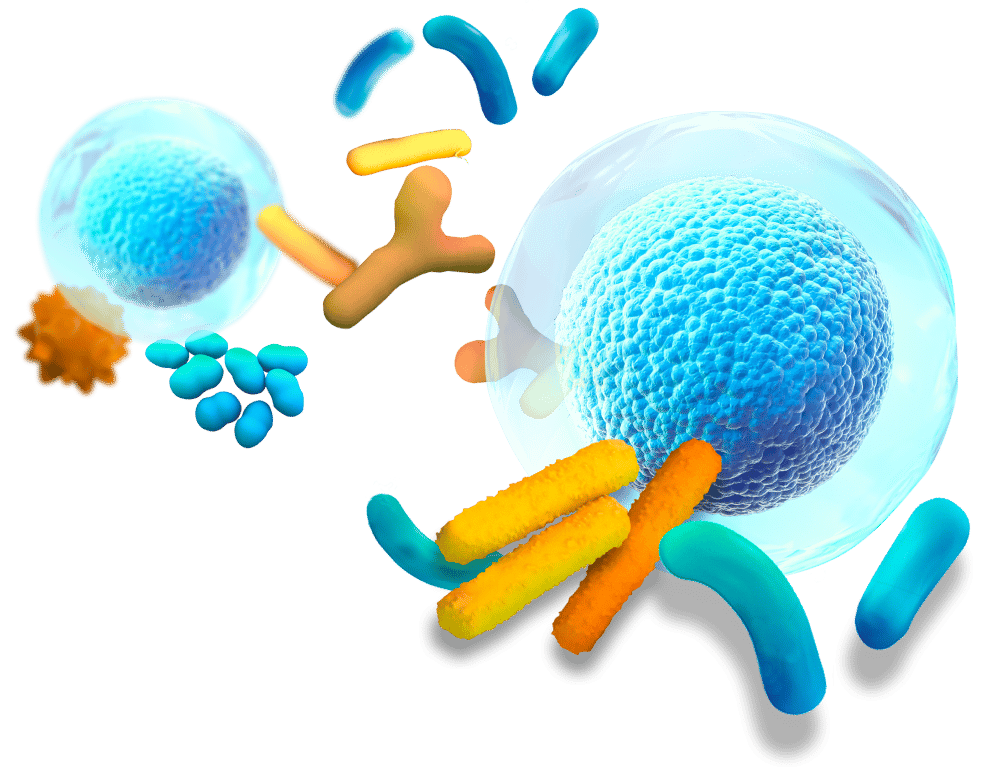The critical role of gut microbiota in human health
Often referred to as the body’s “invisible organ,” the gut flora plays a pivotal role in maintaining overall health and homeostasis. This diverse community of microorganisms, which includes bacteria, fungi, archaea, and viruses, resides in our gastrointestinal tract and influences numerous bodily functions, from digestion and nutrient absorption to immune response and even brain function .
Recent research highlights the deep connection between gut flora and human health, emphasizing its role in modulating the gut-brain axis. The gut-brain axis serves as a bidirectional communication pathway connecting the central nervous system (CNS) with the gastrointestinal system, with the gut flora acting as a crucial intermediary. Dysbiosis, or an imbalance in the gut microbiota, has been associated with various conditions, including neurodegenerative disorders, metabolic diseases, and mood disorders .
Understanding how the gut microbiota interacts with the enteric nervous system (ENS) is essential for unlocking innovative therapeutic strategies. Enterosys, a pioneer in gut-organ research, has been at the forefront of exploring these intricate interactions, aiming to harness the potential of the gut microbiota to improve human health.
Methodology: deciphering gut microbiota and enteric nervous system interactions
In recent studies, researchers have explored how gut microbiota directly and indirectly influence the enteric nervous system (ENS), the “second brain” of the human body. The ENS consists of millions of neurons embedded in the gastrointestinal tract, and it serves as a crucial link between the gut and brain .
Enterosys conducted preclinical research to investigate how microbial-derived molecules, including short-chain fatty acids (SCFAs), neurotransmitters, and bioactive peptides, modulate ENS activity. These molecules can either act directly on ENS neurons via Toll-like receptors (TLRs) or indirectly influence them through the release of gut hormones such as glucagon-like peptide-1 (GLP-1) and peptide YY (PYY) .
Advanced experimental setups involved germ-free mouse models to observe the effects of gut microbiota on ENS structure and function. Researchers measured changes in gut motility, neuronal excitability, and the expression of critical neurotransmitters such as nitric oxide (NO) and acetylcholine (ACh). Additionally, lipidomic and metabolomic analyses were employed to identify bioactive compounds derived from gut flora that could influence gut-brain signaling pathways.
Human health: bridging the gap with innovative therapies
The intricate relationship between gut microbiota and human health underscores the potential of gut-focused therapies for managing systemic diseases. Therapies aimed at restoring microbial balance, such as probiotics and prebiotics have shown promise in modulating ENS activity and improving gut-brain axis communication .
For example, prebiotics like oligofructose have been shown to improve glucose metabolism and gut motility by stimulating the production of bioactive lipids and peptides. Similarly, probiotics from the genera Lactobacillus and Bifidobacterium have demonstrated beneficial effects on mood disorders by modulating serotonin production in the gut .
In parallel, pharmaceutical strategies targeting microbial receptors in the ENS, such as GPR41 and TLR4, could provide novel treatments for conditions ranging from inflammatory bowel disease (IBD) to neurodegenerative disorders.
Partner with enterosys for groundbreaking research
At Enterosys, we are dedicated to advancing your understanding of the gut microbiota and its impact on human health. Our preclinical research combines state-of-the-art methodologies with scientific expertise to valorise your compound.
Source :
Fried S, Wemelle E, Cani PD, Knauf C. Interactions between the microbiota and enteric nervous system during gut-brain disorders. Neuropharmacology. 2021 Oct 1;197:108721. doi: 10.1016/j.neuropharm.2021.108721. Epub 2021 Jul 15. PMID: 34274348.

